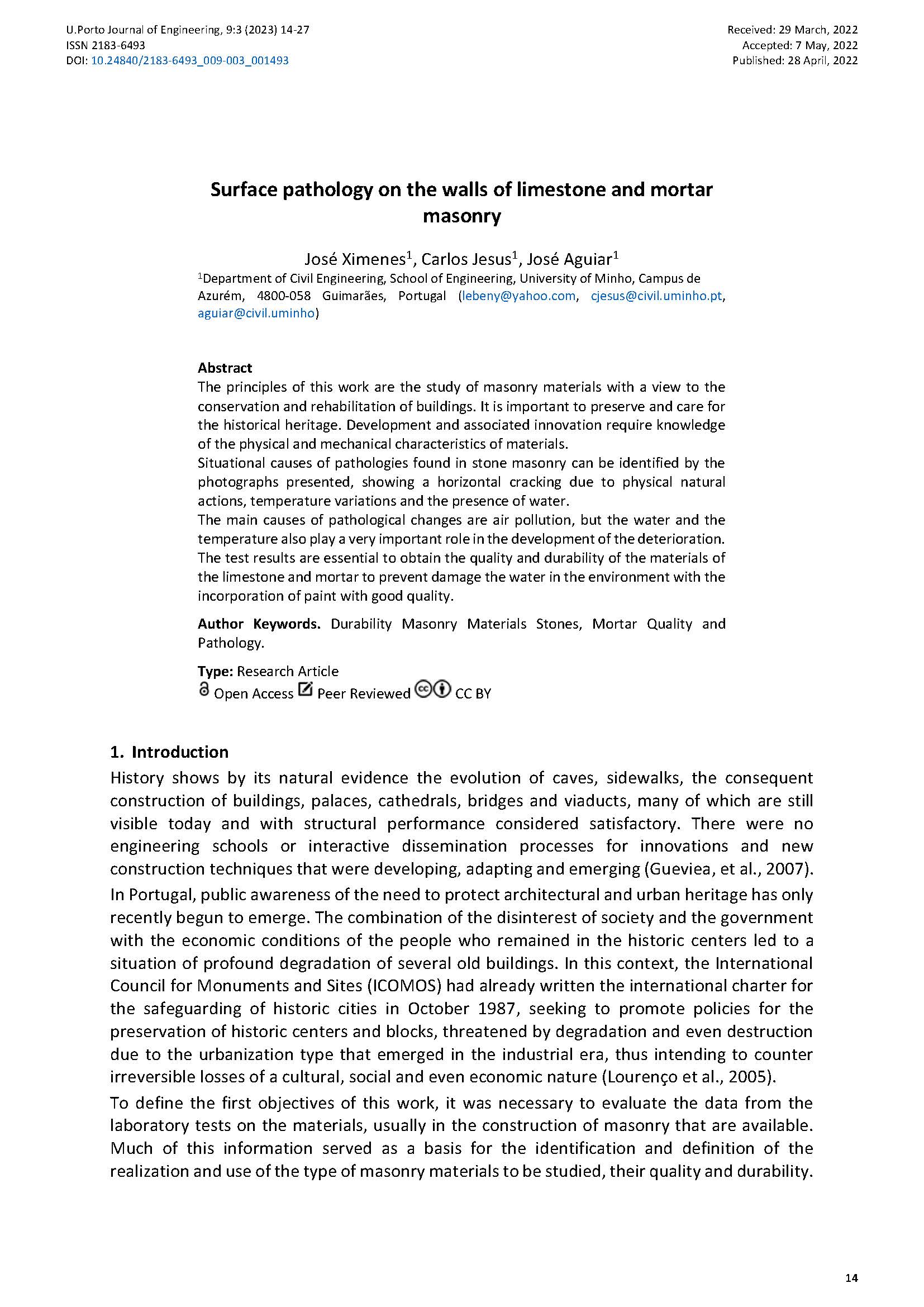Surface pathology on the walls of limestone and mortar masonry
Main Article Content
Abstract
The principles of this work are the study of masonry materials with a view to the conservation and rehabilitation of buildings. It is important to preserve and care for the historical heritage. Development and associated innovation require knowledge of the physical and mechanical characteristics of materials.
Situational causes of pathologies found in stone masonry can be identified by the photographs presented, showing a horizontal cracking due to physical natural actions, temperature variations and the presence of water.
The main causes of pathological changes are air pollution, but the water and the temperature also play a very important role in the development of the deterioration.
The test results are essential to obtain the quality and durability of the materials of the limestone and mortar to prevent damage the water in the environment with the incorporation of paint with good quality.
Downloads
Article Details

This work is licensed under a Creative Commons Attribution 4.0 International License.
Authors who publish with this journal agree to the following terms:
- Authors retain copyright and grant the journal right of first publication with the work simultaneously licensed under a Creative Commons Attribution License that allows others to share the work with an acknowledgement of the work's authorship and initial publication in this journal.
- Authors grant the journal the rights to provide the article in all forms and media so the article can be used on the latest technology even after publication and ensure its long-term preservation.
- Authors are able to enter into separate, additional contractual arrangements for the non-exclusive distribution of the journal's published version of the work (e.g., post it to an institutional repository or publish it in a book), with an acknowledgement of its initial publication in this journal.
- Authors are permitted and encouraged to post their work online (e.g., in institutional repositories or on their website) prior to and during the submission process, as it can lead to productive exchanges, as well as earlier and greater citation of published work (See The Effect of Open Access).

